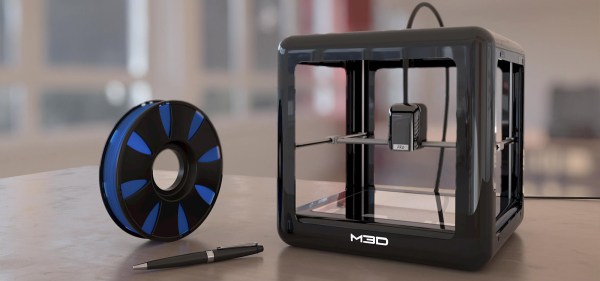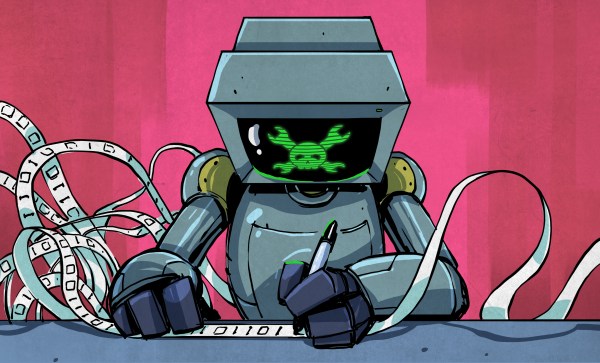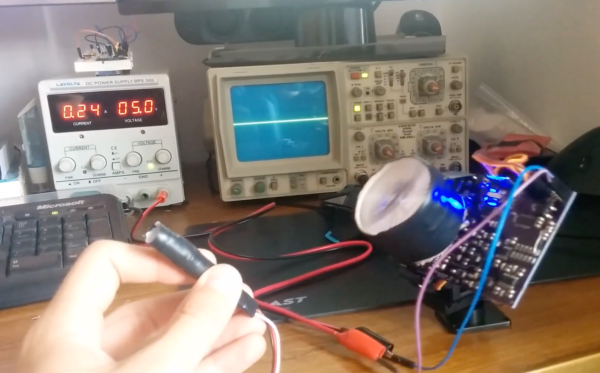M3D just launched their second 3D printer on Kickstarter. The M3D Pro offers more professional features than its predecessor, the M3D Micro, which is still one of cheapest 3D printers around. Despite the higher price of $499, the campaign reached its $100,000 funding goal within hours.
Day: August 18, 2016
The Turing Tapes
The recent movie “The Imitation Game” gave [Alan Turing] some well-deserved fame among non-computer types (although the historical accuracy of that movie is poor, at best; there have been several comparisons between the movie and reality). However, for people in the computer industry, Turing was famous for more than just helping to crack Enigma. His theoretical work on computing led to the Turing machine, which is still an important concept for reasoning about computers in a mathematical way. He also laid the foundation for the stored program computer that we take for granted today.
What’s a Turing Machine?
A Turing machine is deceptively simple and, like many mathematical models, highly impractical. Leading off the inpracticalities, the machine includes an infinite paper tape. There is a head that can read and write any symbol to the tape at some position, and the tape can move to the left or the right. Keep in mind that the head can write a symbol over another symbol, so that’s another practical difficulty, although not an insurmountable one. The other issue is that the symbol can be anything: a letter, a number, a jolly wrencher, or a bunch of dots. Again, not impossible, but difficult to do with practical hardware implementations.
Capacitive Imaging With A Raspberry Pi Touch Screen
We use touch screens all the time these days, and though we all know they support multiple touch events it is easy for us to take them for granted and forget that they are a rather accomplished sensor array in their own right.
[Optismon] has long held an interest in capacitive touch screen sensors, and has recently turned his attention to the official Raspberry Pi 7-inch touchscreen display. He set out to read its raw capacitance values, and ended up with a fully functional 2D capacitive imaging device able to sense hidden nails and woodwork in his drywall.
Reading the capacitance values is not a job for the faint-hearted though. There is an I2C bus which is handled by the Pi GPU rather than the processor, and to read it in software would require a change to the Pi’s infamous Broadcom binary blob. His solution which he agrees is non-optimal was to take another of the Pi’s I2C lines that he could talk to and connect it in parallel with the display line. As a result he can catch the readings from the screen’s sensors and with a bit of scripting make a 2D display on the screen. The outlines of hands and objects on his desk can clearly be seen when he places them on the screen, and when he runs the device over his wall it shows the position of the studding and nails behind the drywall.
He’s posted his code in a GitHub repository, and put up the YouTube video of his capacitive imaging in action which you can watch below the break.
Continue reading “Capacitive Imaging With A Raspberry Pi Touch Screen”
Infrared Targeting On A Small Scale
Sometimes, a person has a reason to track a target. A popular way to do this these days is with a camera, a computer, and software to analyze the video. But, that lends itself more to automated systems, like sentries. What if you want to be able to target something by “painting” it with a laser?
That’s exactly what [Jeremy Leaf] wanted to do, and the results are pretty impressive. He was able to track a .06 milliwatt laser at 2 meters. His design does this using three photodiodes in order to determine the position of a laser spot using triangulation.
Once the location of the laser spot has been determined, it can either simply be reported or it can be tracked. Tracking is achieved with a gimbal setup which updates quickly and accurately. Of course, it can only track the laser if the laser has something to be projected upon. If you need to track something in open 3D space, there are alternatives that would be better suited to the task.













